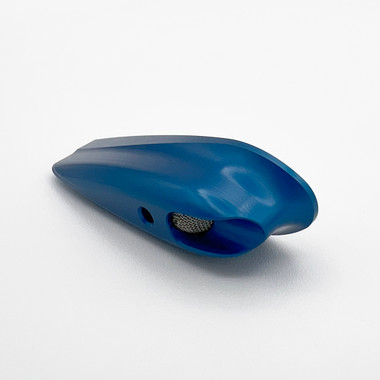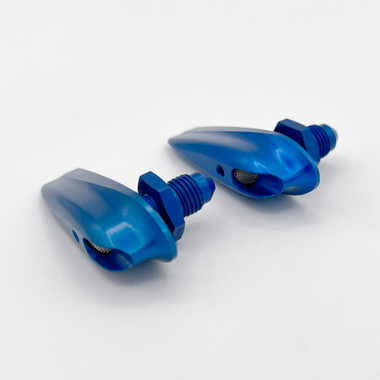Bearhawk Gentlemen, and the fair Lady Oriana from the great north (And any other women builder/owner/pilots in the Bearhawk world),
A situation rose over the weekend that you should be aware of if you happen to fly in the colder climates, or perhaps even super high/cold/wet environments.
I had both of my fuel cap vents freeze up with snow/ice and effectively seal the vent. While the outcome was perfectly fine, the scenario is one that should be avoided.
So obviously, our aircraft are not FIKI approved, so flight into known icing, freezing weather of any sort is to be avoided. While I was not in any icing conditions, I was in a cold blowing crystalized snow event(s) that could easily be construed as small ice particles. And while they don't stick, they can fill pitot tubes and fuel vents and freeze them up.
So while Mark had thought about this potentially happening, this is the first known case of it actually occurring. And likewise, I have hundreds of hours of flying Bearhawks in all seasons, and this is my only time where it happened.
For anyone that may happen to read, the issue here is that once the vents are fully clogged with no air flowing in, at some point the vaccum created by the fuel flow to the engine will overcome the head pressure of the fuel flow, and the flow will likely stop. Those with engines operating fuel pumps of either mechanical or electric will operate longer, as the suction created by them will likely suck the tanks into a partially collapsed state before the flow stops.
Again, in thousands of hours of flying this is the first known case, and it's purely due to the conditions that I was operating in. In this particular case I noticed that I lost the airspeed, and identified it as a clogged pitot tube. This is a non-event as we can all fly just fine without an airspeed indicator. What I did not consider at the time was that it could have frozen shut the fuel vents, due to the size of vent hole in the caps.
I discovered this when I was back on the ground and the engine died while taxing. Pumping the throttle created no resistance from the accelerator pump, showing a sign of no fuel in the bowl. Both tank sumps and caps gushed air in rather than letting fuel out until the pressure was equalized. Fuel then flowed to the carb and the engine fired right back up.
So just keep this in mind if you are flying in blowing snow conditions (more likely than wet freezing), or similar, to just check your caps to ensure your vents are open and clear.
Here's a photo of the ground conditions that led to this.
Peter
A situation rose over the weekend that you should be aware of if you happen to fly in the colder climates, or perhaps even super high/cold/wet environments.
I had both of my fuel cap vents freeze up with snow/ice and effectively seal the vent. While the outcome was perfectly fine, the scenario is one that should be avoided.

So obviously, our aircraft are not FIKI approved, so flight into known icing, freezing weather of any sort is to be avoided. While I was not in any icing conditions, I was in a cold blowing crystalized snow event(s) that could easily be construed as small ice particles. And while they don't stick, they can fill pitot tubes and fuel vents and freeze them up.
So while Mark had thought about this potentially happening, this is the first known case of it actually occurring. And likewise, I have hundreds of hours of flying Bearhawks in all seasons, and this is my only time where it happened.
For anyone that may happen to read, the issue here is that once the vents are fully clogged with no air flowing in, at some point the vaccum created by the fuel flow to the engine will overcome the head pressure of the fuel flow, and the flow will likely stop. Those with engines operating fuel pumps of either mechanical or electric will operate longer, as the suction created by them will likely suck the tanks into a partially collapsed state before the flow stops.
Again, in thousands of hours of flying this is the first known case, and it's purely due to the conditions that I was operating in. In this particular case I noticed that I lost the airspeed, and identified it as a clogged pitot tube. This is a non-event as we can all fly just fine without an airspeed indicator. What I did not consider at the time was that it could have frozen shut the fuel vents, due to the size of vent hole in the caps.
I discovered this when I was back on the ground and the engine died while taxing. Pumping the throttle created no resistance from the accelerator pump, showing a sign of no fuel in the bowl. Both tank sumps and caps gushed air in rather than letting fuel out until the pressure was equalized. Fuel then flowed to the carb and the engine fired right back up.
So just keep this in mind if you are flying in blowing snow conditions (more likely than wet freezing), or similar, to just check your caps to ensure your vents are open and clear.
Here's a photo of the ground conditions that led to this.

Peter





Comment